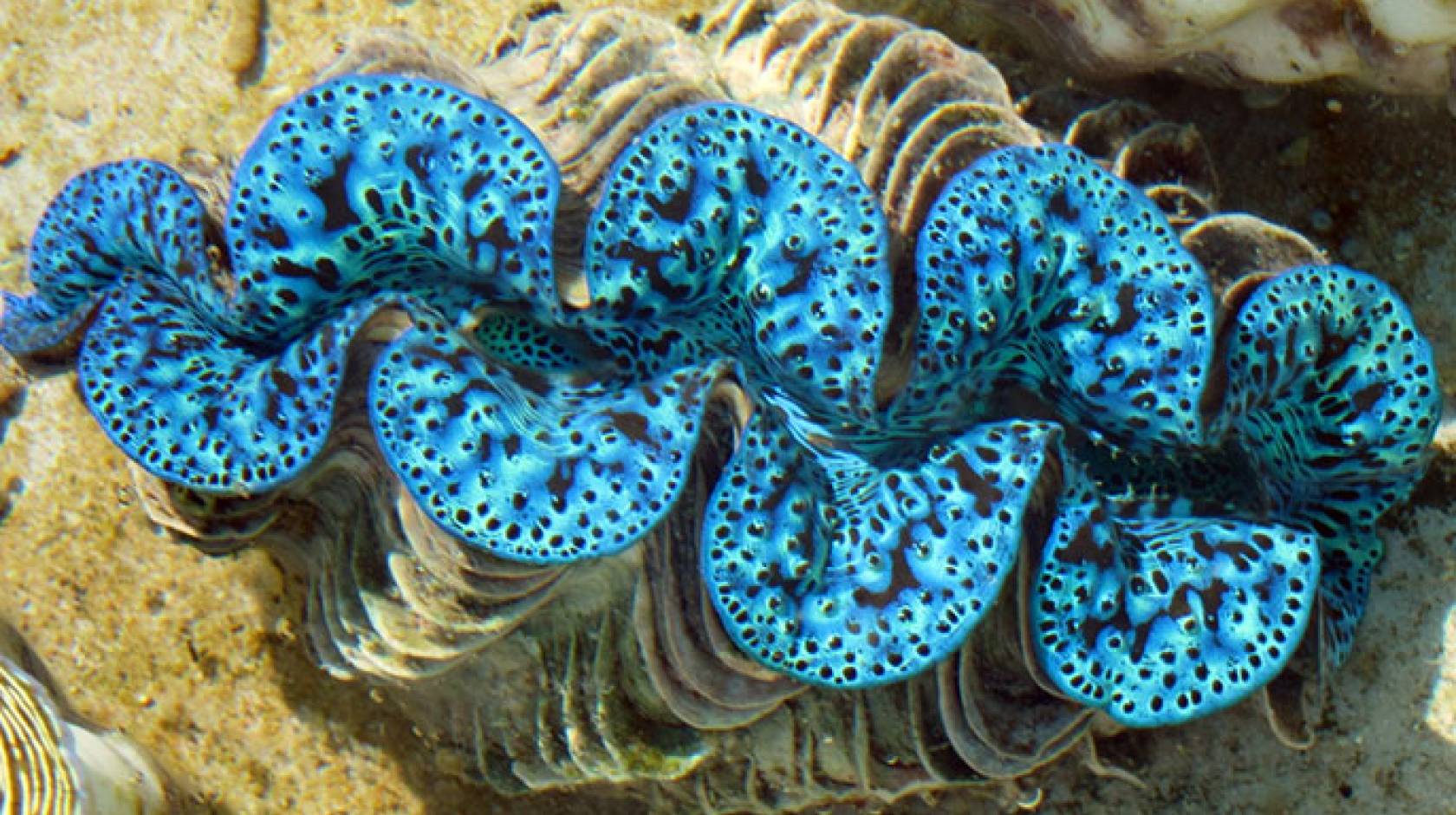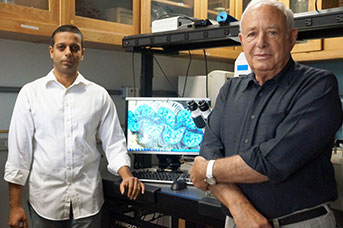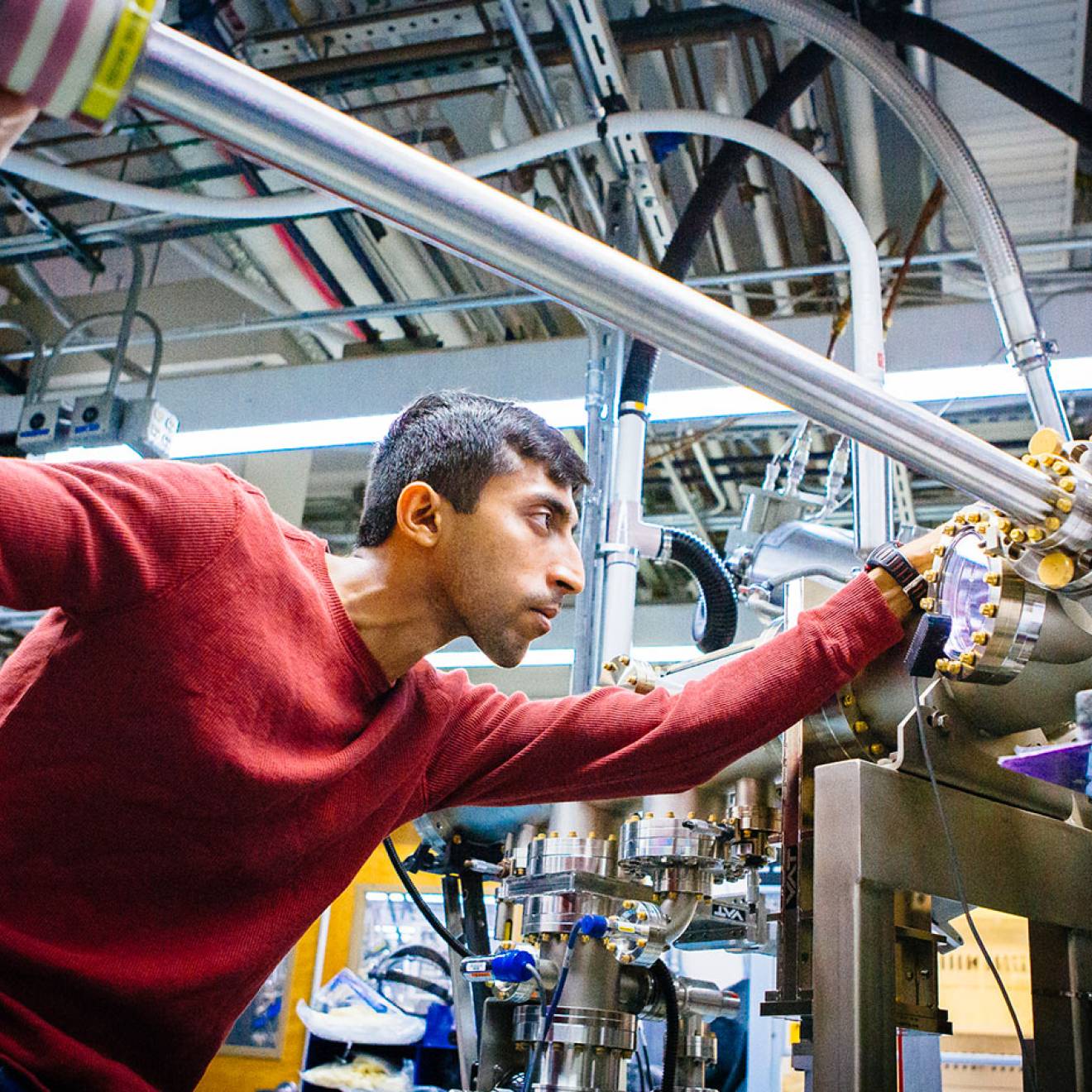Julie Cohen, UC Santa Barbara

The next great technological advance in smartphone screens and solar cells could come from an unexpected source — giant clams. New research from UC Santa Barbara shows some species of these large bivalves produce their white coloration via color-mixing techniques akin to those used in reflective displays.
Appearing in the journal Optica, the study focuses on two species of giant clam and the symbiotic photosynthetic algae with which they cohabitate. Iridescent cells on the inside edge of the clams’ shells where the algae live produce a dazzling array of colors, including blues, greens, golds and — more rarely — white, which the animals mix in different ways.

Credit: Sonia Fernandez
Both clam species create white by mixing clusters of colors in much the same way that the electronic displays found in televisions, smartphones and electronic billboards combine red, blue and green pixels to make white. However, most of today’s displays generate light using LEDs or another light source, while the clams require only sunlight. Their iridescent cells contain tiny multilayer structures of proteins that act as mirrors, reflecting various wavelengths of light to produce colors.
“If we could create and control structures similar to those that generate color in the clams, it might be possible to build color-reflective displays that work with ambient light sources such as sunlight or normal indoor lighting,” said lead author Amitabh Ghoshal, a postdoctoral fellow at UCSB’s Institute for Collaborative Biotechnologies (ICB). “Producing color the way giant clams do could lead to smartphone, tablet and TV screens that use less power and are easier on the eyes.”
Ghoshal worked with Daniel Morse, a professor emeritus in the campus’s Department of Molecular, Cellular, and Developmental Biology and director of this research, and UCSB alumna Elizabeth Eck, now a graduate student at UC Berkeley.
Lessons from giant clams for solar cell design
To study the somewhat rare white coloration, the researchers purchased live farm-raised or responsibly harvested Tridacna maxima and Tridacna derasa. They were surprised to find that each species used a different method for mixing colors to produce white. Tridacna maxima produced white from tight clusters of different colored iridescent cells, while Tridacna derasa used multicolored individual cells that appear white on a macroscopic scale.
“As far as we know, there is no reason or advantage to having different colored separate cells compared to individual cells with multiple colors in them,” Ghoshal said. “It is possible that one species has the genetic tools for one configuration and the other species has the tools to make the other configuration, but we don’t know that yet.”
The scientists studied the clams using a combination of microscopy and spectroscopy in order to precisely measure the color and amount of reflected light coming from individual cells. With this information, they could figure out whether a region that appeared bright white resulted from a few highly reflective cells or a great number of less reflective cells. To accomplish spectroscopic analysis at cellular and subcellular scales, they used a high-resolution microspectrophotometer constructed for their previous study of reflective structures in squid skin cells.
“It is difficult to acquire individual spectra from a small cell that shows multiple reflective colors,” Ghoshal said. “It took a lot of patience and trying different approaches.”
In addition, the team is investigating how the iridescent cells of giant clams interact with their algal partners to enhance photosynthesis. “Like solar cells, photosynthesis involves converting light into energy,” Ghoshal explained. “As we expand our understanding of the clams’ system for light collection, we can take lessons from it to create solar cells that more efficiently convert light to energy.”
Ghoshal and Morse are now collaborating with UCSB chemistry and materials professor Guillermo Bazan to design and test solar cells with structures similar to those found in the clams. They seek to determine whether it is possible to increase the efficiency of synthetic solar cells.
“If we could use what we learned from the clams to build a very efficient, distributed light-gathering system, then we could use that to make more efficient three-dimensional solar cells that require less area than our present rooftop and land-based solar farms,” Ghoshal said.

